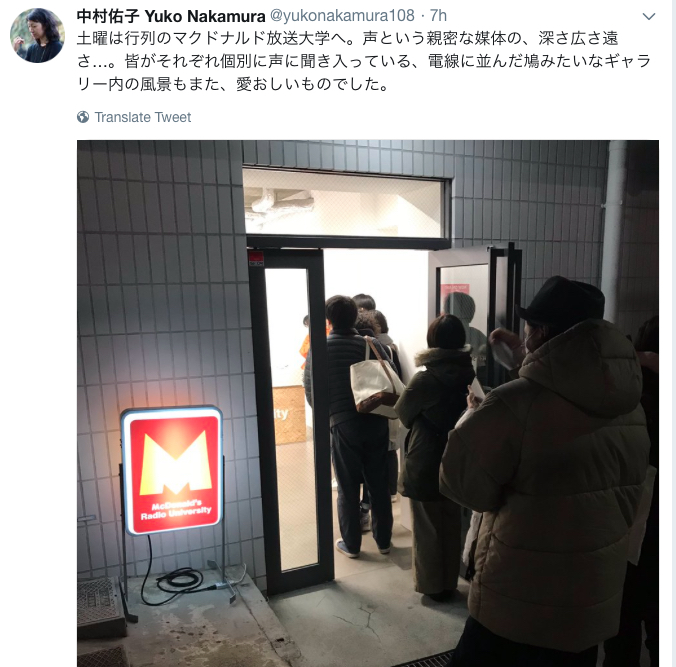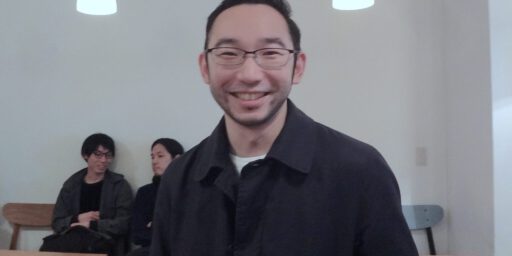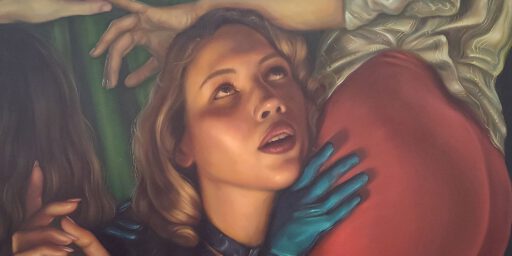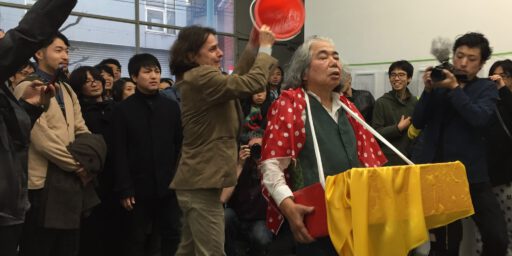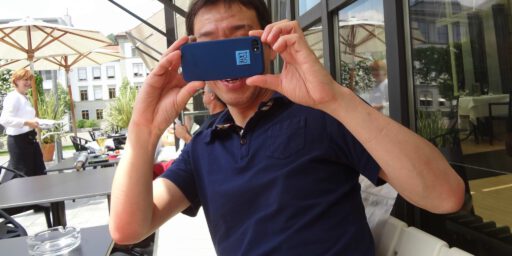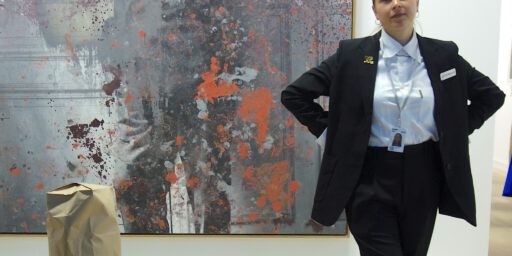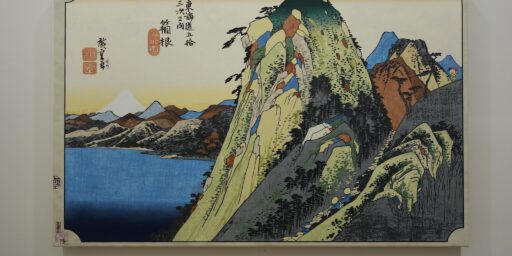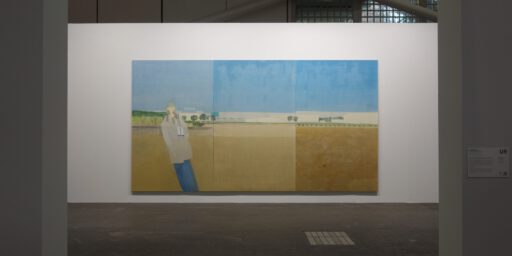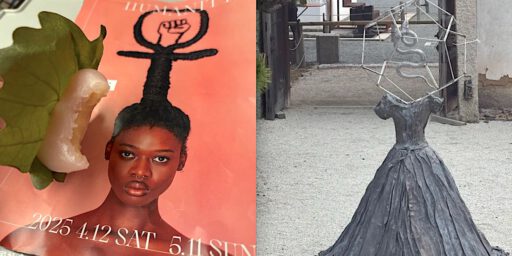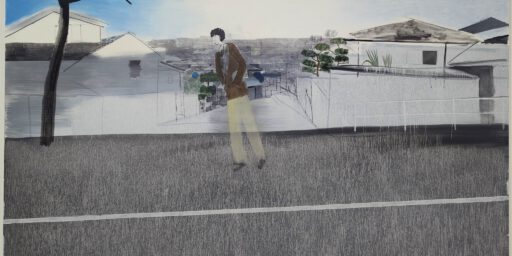平穏な社会政治的アート・アクティヴィズム、傑出した「マクドナルド放送大学」作 by 高山明 @ MISA SHIN GALLERY Peaceful Sociopolitical Art Activism with the Excellent Work "McDonald’s Radio University" by TAKAYAMA Akira @ MISA SHIN GALLERY
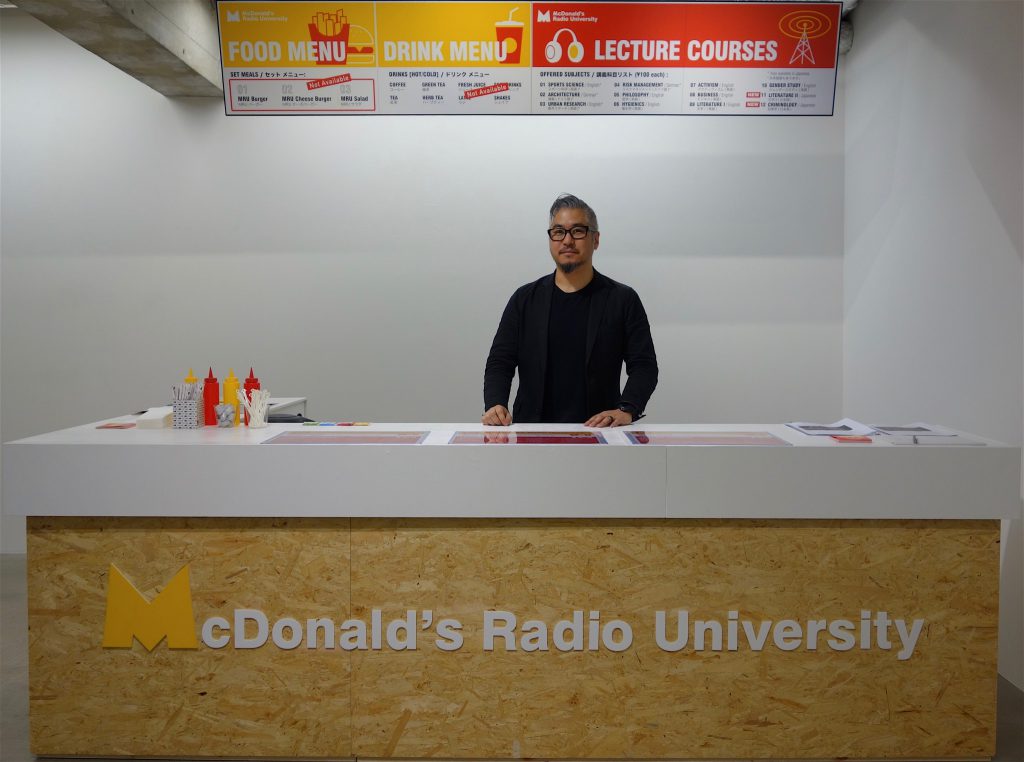
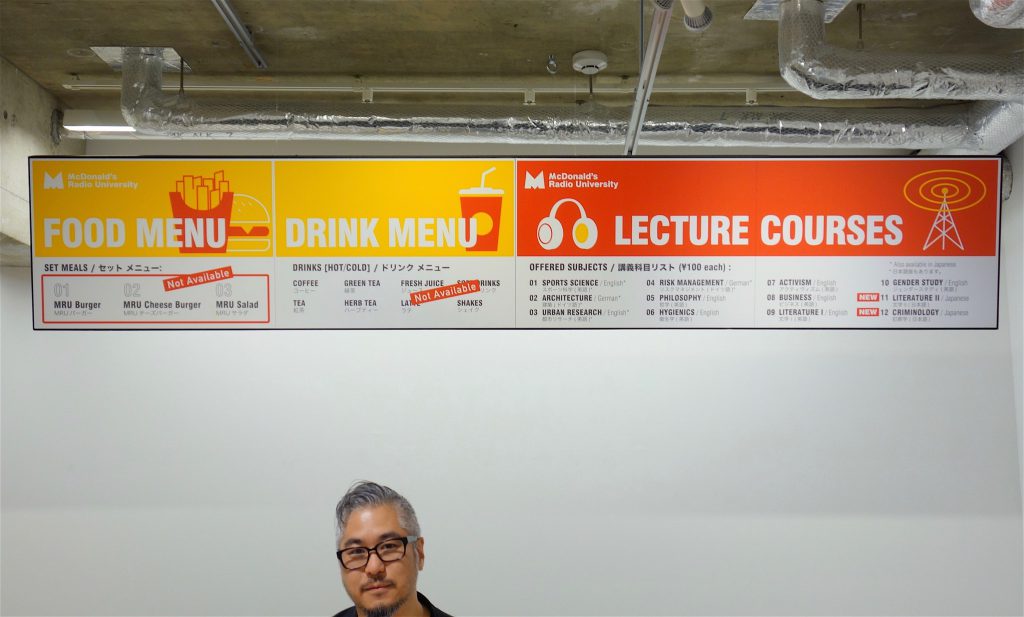
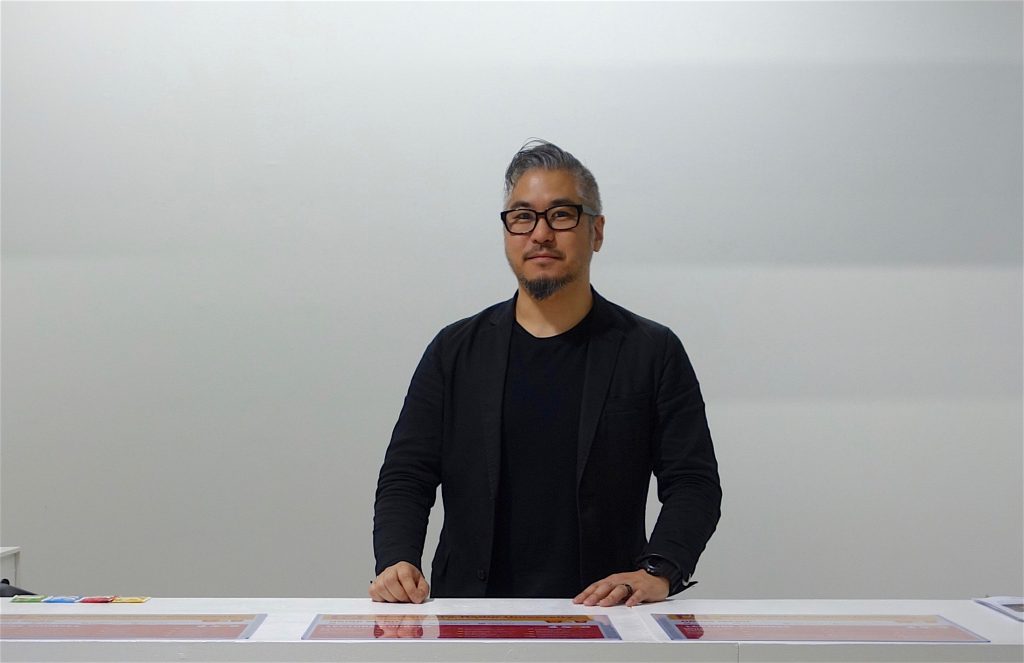

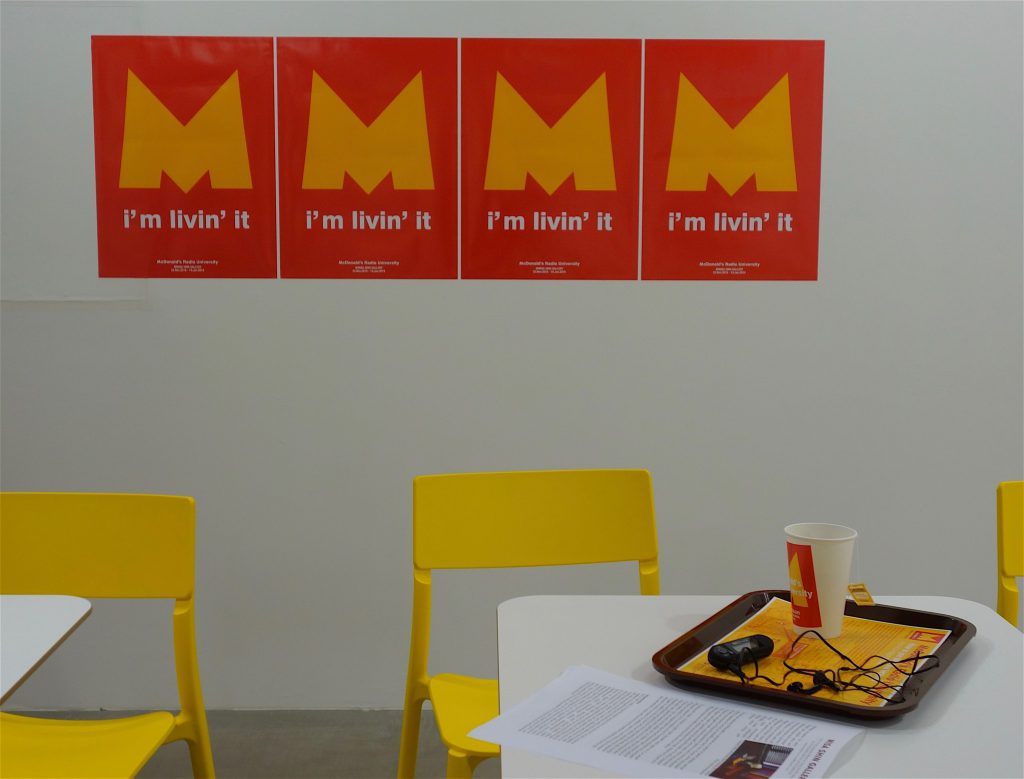
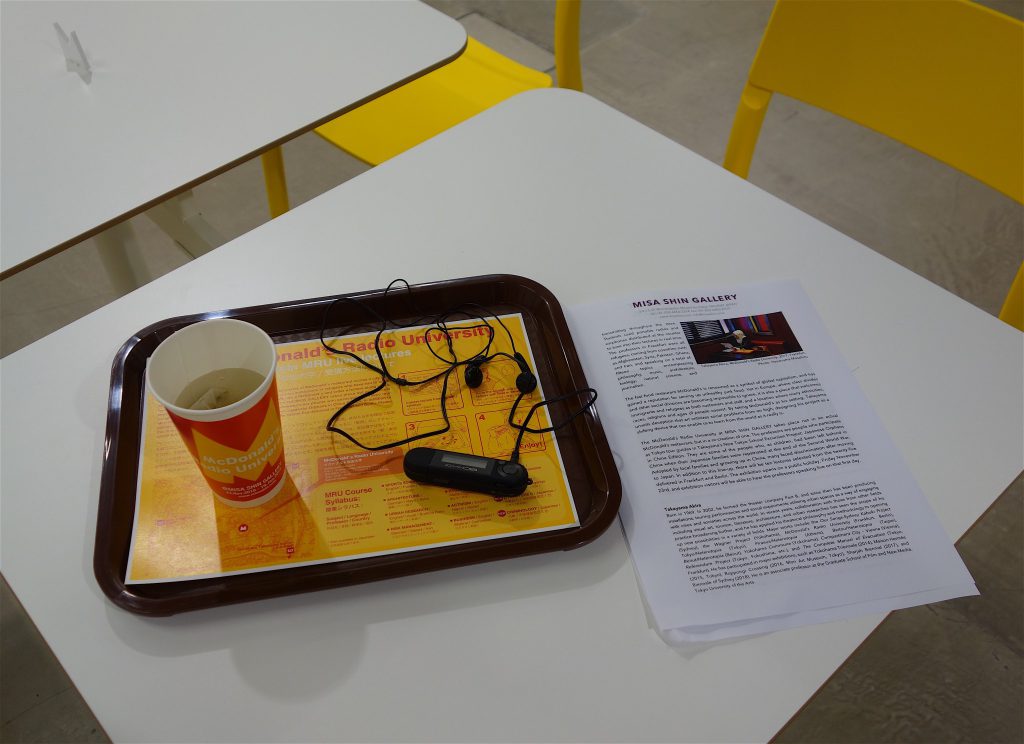

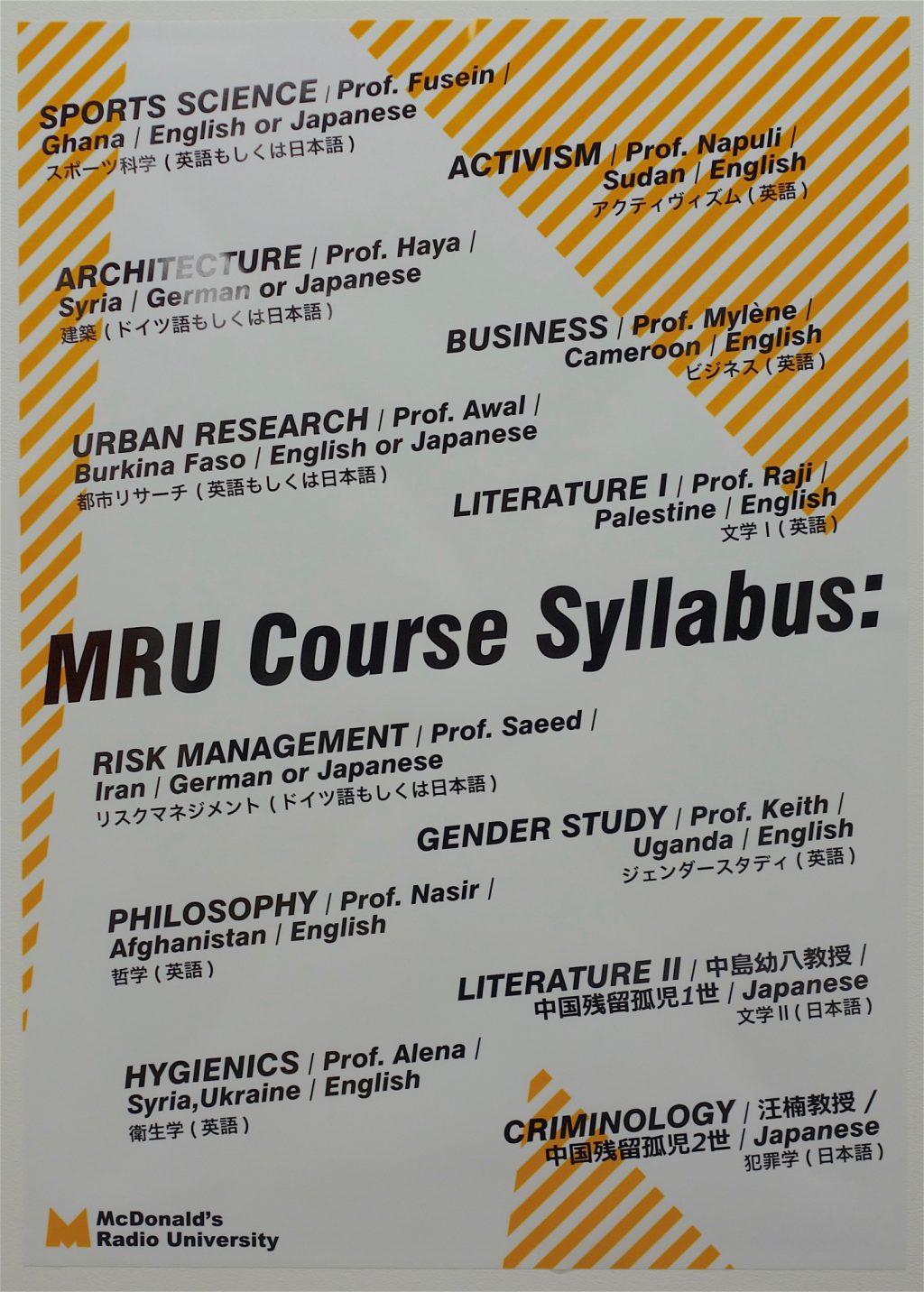
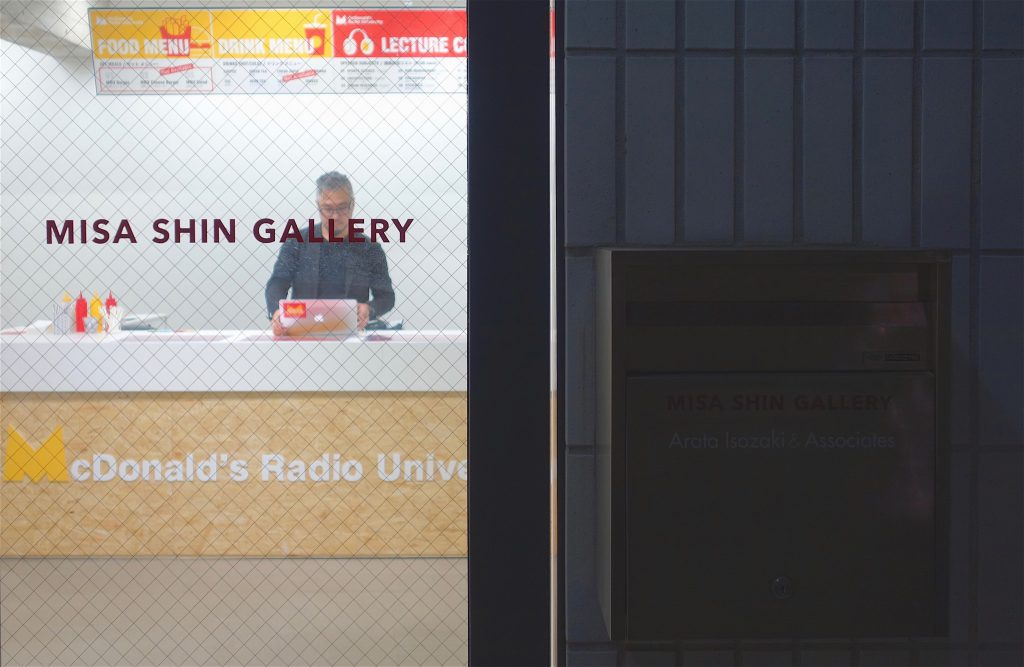
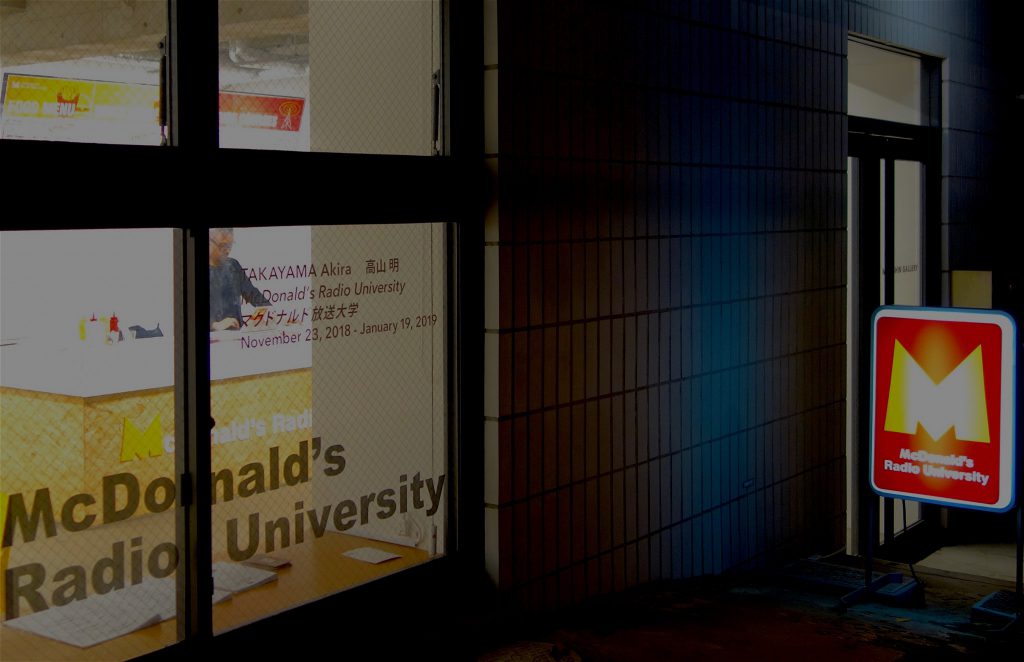
A very demanding, socially engaged art practice by TAKAYAMA Akira 高山明, is actually occurring in the MISA SHIN GALLERY, Tokyo.
We should keep in mind, that we’re livin’ in a time, when discussions are going on if the traditional “Leo Castelli model” still fits in the current art ecosystem, which is heavily dependent on art fairs like ART BASEL and Instagram ‘likes’ as “l’exercice très chronophage”.
Artist and stage director TAKAYAMA Akira, seen from the theater world, incorporates the free agency status of artists.
Wanting to execute a new, never seen before, art work in the white cube, implies exactly 110 years of historical knowledge of works by independent artists and art group movements, starting with the Italian ‘Manifesto del Futurismo’.
How could this happen in Japan, where out-dated, conservative art historians TSUJI Nobuo 辻惟雄, TAKASHINA Shuji 高階秀爾 and YAMASHITA Yuji 山下祐二 are nervously trying to shut out artists who don’t paint or sculpt? Why don’t they stop publishing wrongly written/edited art historian books? Why do they ignore the many excellent, contemporary non-painters/non-sculptors, like TAKAYAMA Akira? In the influential Asahi Newspaper, as every year in December, Takashina and Yamashita picked up foremost old, local-historical exhibitions themes in their “Best 3 Exhibitions”. What a shame for the Japanese contemporary art world!
In this regard, let’s recapitulate and single out the case of outstanding artist TAKAYAMA. His artistic career is the fruit of the teaching and art practice not by Japan’s corrupt artists groups like NITTEN 日展 or INTEN 院展, but by deceased, in Japan well known, German artists Joseph Beuys,
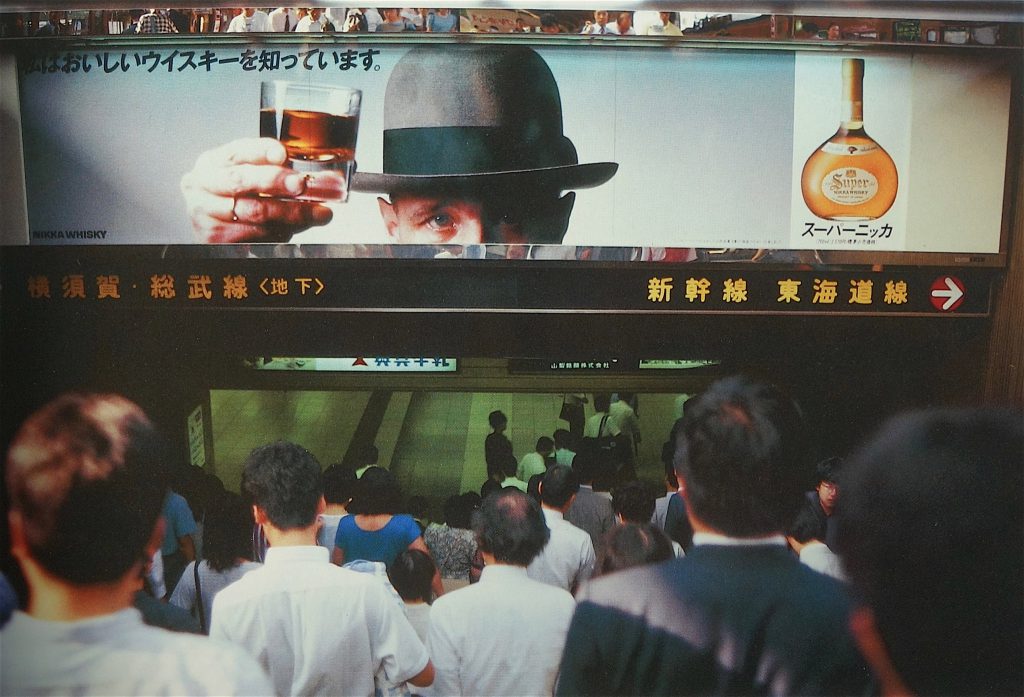
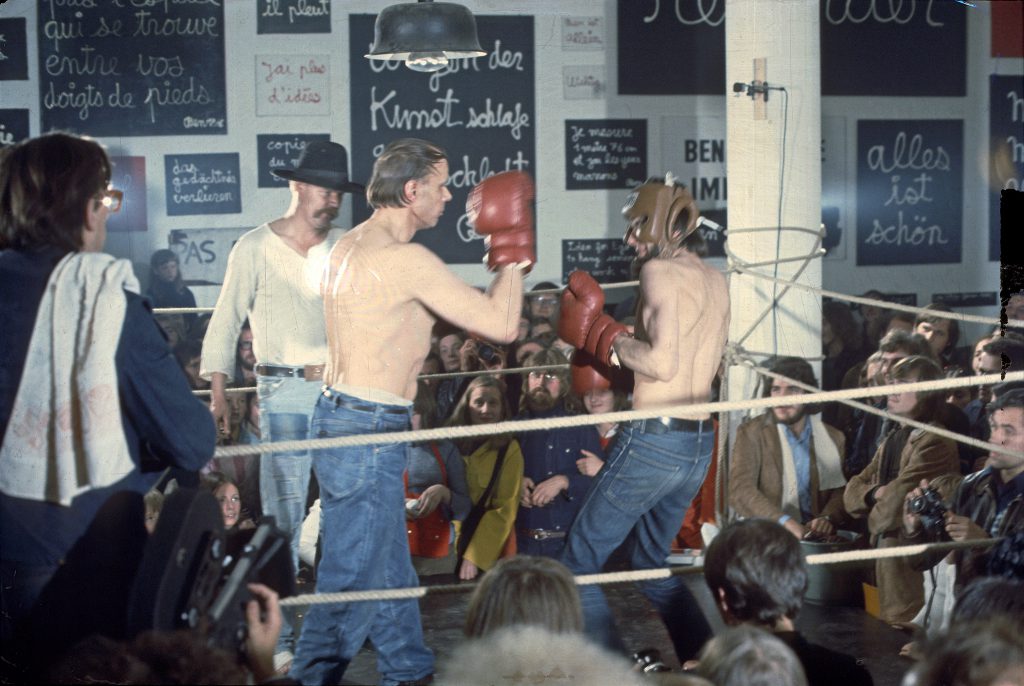
quote: (it was 1972, last day of Documenta5, not 1977 as written in the text by Phaidon)”…Free International University project. Beuys transformed an exhibition area into an educational space for films, lectures and a series of workshops on subjects such as ‘Nuclear Energy and Alternatives’, ‘Media’ and ‘Work and Worklessness’. “ At the end of this run, Beuys put his words into action an extraordinarily vivid way: a boxing match.”
https://uk.phaidon.com/agenda/art/articles/2017/july/10/when-joseph-beuys-boxed-for-democracy/
“Beuys’s ambitions for art are only plausible if you agree that his pedagogy was art”
https://www.theguardian.com/artanddesign/2005/feb/06/art2
or Gallery Hauser & Wirth artist Christoph Schlingensief, who posthumously won the Golden Lion at the Venice Biennale 2011.

“Bitte liebt Österreich” Wiener Festwochen, 2000
Foreigners out! Schlingensiefs Container
https://en.wikipedia.org/wiki/Foreigners_out!_Schlingensiefs_Container
In 1997, Schlingesief staged an art action at the documenta X exhibition in Kassel as part of the performance space “Hybrid WorkSpace,” which was curated by Klaus Biesenbach, Nancy Spector, and Hans-Ulrich Obrist. During the performance, Schlingensief was arrested for carrying a placard with the words “Kill Helmut Kohl!”
https://en.wikipedia.org/wiki/Christoph_Schlingensief

pic courtesy by the Church of Fear:
http://www.church-of-fear.net/deutsch/

Let’s not forget the courageous bravery of KOYAMA Tomio 小山登美夫 (TOMIO KOYAMA GALLERY), who invited Tokyo born Jonathan Meese in 2008/9 to exhibit in his gallery with “Mishima is back” and to perform the extraordinary powerful “Dictatorship of Art” at the Yokohama Triennale, see pic.

Historically reflected, one of the best art works hitherto executed in the internationally operating YOKOHAMA Triennale 横浜トリエンナーレ.
This kind of artistic platform of anarchistic, liberating art practice originated exactly half a century ago in West Germany during Documenta 4.
With socio-political art performances, previously known from Futurism and Dadaism, the global contemporary art scene put Documenta in Kassel at its centrifuge.
Anselm Kiefer, Jörg Immendorf, Wolf Vostell, Fritz Heubach and Joseph Beuys a.o. obstructed vehemently conservatism in academic teaching and art critique. Much of the emancipating Zeitgeist of the ’68 became hereby the reference for future artistic practices around the globe.
To target the analogue media and progressive museum curators, the pre-internet era forced artists and theorists to print time-consuming, cheaply produced pamphlets, which then were distributed either for free or for little money.
This kind of social, free-for-all attitude can be actually experienced at TAKAYAMA’s Mc Donald’s University, where one coin (Yen 100) get’s you one drink and an academic lecture by immigrants or refugees.
In the context of contemporary artistic practice in those times, the art reviews and articles in conservative art magazines suddenly changed. Eventually, the free-for-all pamphlets became the organs for activist art, committed to critically engaged artists, who worked outside the traditional media, therefore radically snubbed prevalent artistic taste. Painting was dead.
In retrospect, the period between Documenta 4 and 5 created radical forms of artistic expression; Institutional Critique and the role of critical engagement became the new standard for artists who influenced young, emancipating (nota bene: feminism) generations of both gender, which partly became later the base for the founders of the Green Party of West Germany.
With the age of 18, I could go to the polls and vote. My choice was “Die Grünen”.
In relatively short time The Green Party became part of the local government, later on, even part to the German Government.
Unfortunately, neither the youth in Japan nor the youth in the USA succeeded in establishing a politics-influencing Green Party.
Therefore, even after Chernobyl and 3/11, nuclear reactors, as part of the social contract, are still running in Japan.
Nuclear weapons are, as part of the social contract, still “popular” in the USA.
(To stay focussed, I’m skipping the topics about military powers like Russia and China.)
TAKAYAMA Akira ante portas. Basically, his conceptual cosmos and art activism carries Christoph Schlingensief onto the theater stage, into the streets, and inside the white cube.
Our respect in this regard goes to the risk-taking attitude of the MISA SHIN gallery owner, who is supporting Takayama’s new performative and interdisciplinary œuvre, which is aimed at exploding existing boundaries and fostering dialogues with “Mc Donald’s Radio University”. Very much in the spirit of the interdisciplinary “Free International University” by Beuys.
The well executed, stringent setting in the gallery let’s the visitor interact in a disturbing normative procedure, because its déjà-vu similarities to the interior design of McDonald’s.
Abstractly speaking, the representative place, spazio universale americano, where the poor class of US citizens become “obese” and ”lethargic”, ergo, anti-socio-political.
Even if the explanatory text points out, that Takayama’s project had been initially realized with the help of McDonald’s in Germany, the Japanese version in the center of bourgeois Tokyo, makes the visit to the gallery a really special, much better one.
Why?
Because it manifests, reminds the Japanese viewer, through this interacting art experience with “American culture” & “junk-food”, the theory of “expanded art concept” (Erweiterter Kunstbegriff) by Green Party co-founder Joseph Beuys.
see:
Joseph Beuys hat die Grünen geprägt (Joseph Beuys shaped the Green Party)
Zum 25. Todestag von Joseph Beuys erklärt Claudia Roth, Bundesvorsitzende von BÜNDNIS 90/DIE GRÜNEN
https://www.gruene.de/presse/joseph-beuys-hat-die-gruenen-gepraegt.html
A subtle undermining of the upper echelons of a would-be ruling class who, in their driven generosity, demand those vast and sanctified spaces of an expensive museum or an elitist concert hall in Minato-ku, as testimony to the importance of their class and self-congratulatory public service.
When attitude becomes form with Takayama’s concrete “I’m livin’ it” slogan.
(How shall I interpret the “M”? I really don’t want to distract from the true intention of Takayama’s superb body of work, however, one could read: “Marxism, I’m livin’ it”.)
In its appalling simplicity and multivalent psychological, political and socio-historical meanings, “it” promotes experimental formats and positions independent of the art market or collection interests.
I call this: beautiful poetry and ratio by TAKAYAMA Akira. I’m lovin’ it!
One of the strong exhibition’s highlights, as satire, is an historical anecdote.
When McDonalds was on the verge of bankruptcy, they looked for a new slogan. First, a German advertising company offered them the slogan “Ich liebe es”. Later on, McDonalds secretly hired Justin Timberlake for US$ 6 Mio and manipulated the music chart in a small country like Belgium. The rest is history.
I’m lovin’ it by Justin Timberlake (McDonalds version)
Kudos also to KAETSU Takayuki 嘉悦貴之, who did a tremendous, very convincing job on the spot in the context of the global refugees’ problematic topic, which obviously didn’t begin “yesterday”.
“McDonald’s Radio University” multi-layered work involves knowledge of world’s history and geo-political expertise. KAETSU’s articulative presence took the Gesamtkunstwerk into higher spheres. Bravissimo!
Kaetsu’s task was to “sell” refugees_professors’ lectures for Yen 100.
We could had been the students, like the “prototype” project in Frankfurt, wondering, if all lectures were academically researched.
One could choose between ’Sports Science’ from Ghana, ‘Activism’ from Sudan, ‘Architecture’ from Syria, ‘Business’ from Cameroon, ‘Urban Research’ from Burkina Faso, ‘Literature I’ from Palestine, ‘Risk Management’ from Iran, ‘Gender Study’ from Uganda, ‘Philosophy’ from Afghanistan, ‘Hygienics’ from Syria/Ukraine. All in different languages.
The visitor to the gallery couldn’t talk directly to the artist, but his proxy. In this precarious situation, Kaetsu’s eventual vulnerability could have been exposed if the visitors would have started a discussion regarding the difference between political asylum and economic asylum. When do humanitarian aid for Chinese refugees stop because of Japanese immigrations laws? How much should an artist care about REAL POLITIK, as she/he is not supposed to make politics (= nota bene: I am provoking a contradiction by myself, purposely) , – but trigger off utopian questions?
The complex legal distinctions between asylum seekers, refugees and economic migrants has got lost nowadays, not only in Japan.
To make “McDonald’s Radio University” more locally focussed, Takayama added to the Tokyo version: ‘Literature II’ + ‘Criminology’.
Quote from the exhibition text:
“The professors are people who participate as Tokyo tour guides in Takayama’s New Tokyo School Excursion Project: Japanese Orphans in China Edition. They are some of the people who, as children, had been left behind in China when their Japanese families were repatriated at the end of the Second World War. Adopted by local families and growing up in China, many faced discrimination after moving to Japan.“
Heavy mental topics to digest for the non-initiate. Feeling empathy is one thing. Exercising complicated “REAL POLITIK”, which involves soft diplomacy behind closed doors, a different matter.
Empathy and “REAL POLITIK” are two different pairs of shoes.
Said that, we should calmly respect Takayama’s Gesamtkunstwerk, which itself is, fortunately, filled with plenty of food for thought.
Re-addressing the globe-trotting artist’s intentions and practice, several vulnerable points for discussion were hidden in Takayama’s exhibition text.
“The fast food restaurant McDonald’s is renowned as a symbol of global capitalism, and has gained a reputation for serving up unhealthy junk food. Yet in Europe, where class divides and other social divisions are becoming impossible to ignore, it is also a place that welcomes immigrants and refugees as both customers and staff, and a location where many ethnicities, races, religions and ages of people coexist. By taking McDonald’s as his setting, Takayama unveils deception that art criticizes social problems from on high, designing his project as a shifting device that can enable us to learn from the world as it really is.”
This is ‘something’, where we have to take a deep breath.
1. Quote: “Yet in Europe, where class divides and other social divisions are becoming impossible to ignore,”…
Some would argue: “Kill your Tenno, first” (not my sentence), or, ask the so called members of the “Buraku Liberation League”…
2. Quote: “By taking McDonald’s as his setting”
From my personal experience and research, shitty American McDonalds’ industrial food system is so fucked up, that I wonder why Takayama couldn’t choose another concept to transport his message/intentions.
But, well, we take it as it is, – that means, Takayama succeeded in provoking.
In addition,
3. the last sentence refers directly to teacher-like Beuys, which per se is questionable as an oxymoron in this period, as we’re are writing the year “Heisei 31” in Japan.
We should keep in mind, that today’s global art critique became irrelevant, as artists nowadays are free from social constraints, lonely wolves, and, economically free, more than ever.
Artists are free from any teaching, free from any art school, and, hopping + fucking around the globe.
Artists behave like anarchists, like pubertal children.
Case by case, artists act anti-social, create on purpose anti-moral, silly works.
Let it be as it is.
Art is always in motion, practicing art should be fun, too.
In this regard, what I would like to see more in Takayama’s future, artistic practice, is Schlingensief’s openly shown sarcasm and straight irony. In the end, even Beuys could laugh about his own statements, arty executions, and political performances.
I don’t hesitate to write: “fuck art teaching”, “fuck the Enlightenment discourse by art teachers”.
Finally, quote, “as a shifting device that can enable us to learn from the world as it really is.” is the last thing I want to hear.
Going one step further. Every sentence we read has to be critically questioned. More than ever, as the internet itself is unregulated and fake. Texts and pictures can be easily manipulated.
Social liberty in the “West” won’t be given up through pressure by totalitarian countries like China, our Japanese neighbor, where the youth doesn’t even know about its own, history deciding, catastrophic Tiananmen Square Massacre 1989 六四天安門虐殺.
How History Was Wounded: An Exclusive Report on Taiwanese Media
Taiwanese Artist Shu Lea Cheang “Live from Tiananmen Square” (June 1989)
I am happy to say, that the ’68 revolution in the “West” brought us the social freedom, emancipating feminism, and liberating sex and art practices.
Finally, coming to the conclusive moment, I hereby strongly endorse TAKAYAMA Akira’s work “McDonald’s Radio University”.
It provokes critical thinking and interactive, performative practice by the viewer.
What should we expect from future TAKAYAMA, besides German-Wagnerism?
How about doing some “regional art activities” à la “Christoph Schlingensief” in Kyushu?
My personal wish for TAKAYAMA would be to challenge the biggest, 50 years old, structural problem in Japan’s society.
I would like to see an invasion of his performative art practice on all the strongholds of the LDP 自民党 in Kyushu, Shikoku and the prefectures like Okayama, Hiroshima and especially Yamaguchi, the home turf of Prime Minister Abe, see the attached map of last’s election in 2017. Red = LDP 自民党 wins.
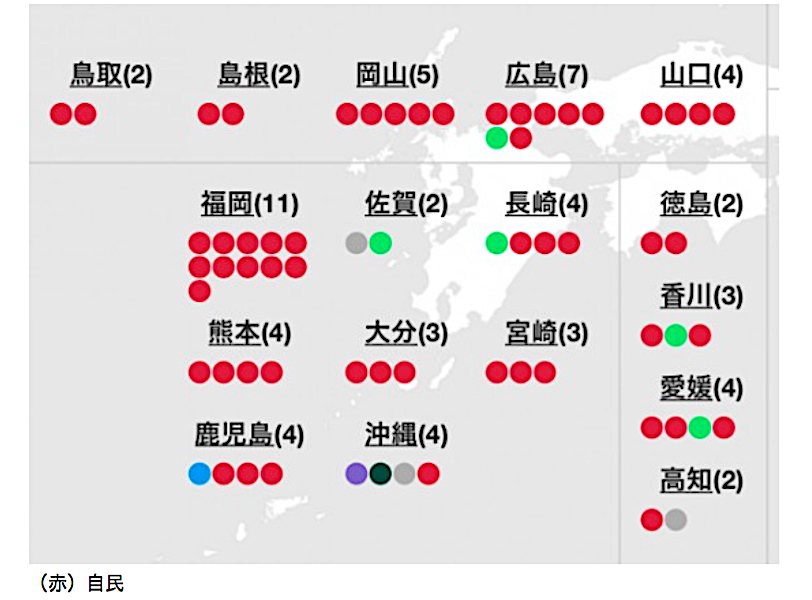
https://www.nhk.or.jp/senkyo/database/shugiin/2017/
A radical development, a consequent evolutionary process for a stage director and artist in this land.
It gave him a passport, stamped with the seal of the Emperor.
The Imperial Seal of Japan, also called the Chrysanthemum Seal 菊紋, implies, artistically seen, erotic metaphors. Like the body part seen through stained glass in Christoph Schlingensief’s famous “Church of Fear”.
Tokyo, January 6th, HEISEI 31 + GANNEN of the new Japanese Emperor’s Reign
Mario A
2019/1/11, UP-DATE!!
高山明 「マクドナルド放送大学」
TAKAYAMA Akira “McDonald’s Radio University”
MISA SHIN GALLERY
2018年11月23日 – 2019年2月2日(土)まで会期延長
現在開催中の高山明による「マクドナルド放送大学」展ですが、ご好評につき、会期を2月2日(土)まで延長いたします。是非この機会にマクドナルドを模したギャラリー空間で受講いただけますと幸いです。みなさまのご来廊お待ちしております。
http://www.misashin.com/exhibitions/takayama-akira-mcdonalds-radio-university/
up-date, 2019/1/11:
Takayama Akira
McDonald’s Radio University
On view through Saturday February 2, 2019
MISA SHIN GALLERY is happy to announce that the exhibition McDonald’s Radio University by Takayama Akira is now extended through Saturday, February 2, 2019. Please visit us and order a lecture you like, then enjoy it in our gallery space which is re-created like McDonald’s.
MISA SHIN GALLERY
3-9-11-1F Minamiazabu, Minato-ku, Tokyo 106-0047
〒106-0047 東京都港区南麻布 3-9-11 パインコーストハイツ 1F
Tuesday-Saturday 12:00-19:00
Closed on Sunday, Monday, National Holiday
http://www.misashin.com
PR by the gallery:
http://www.misashin.com/exhibitions/takayama-akira-mcdonalds-radio-university/
Born in 1969, Takayama Akira is a theater director and artist who embraces a broad range of non-conventional performance methods in a bid to expand the concept of theater within contemporary society. They include installations, touring performances, social experimentation projects, discourse events, sightseeing tours, videos, and many other approaches.
McDonald’s Radio University is a project that transforms branches of McDonald’s restaurant across a city into lecture spaces, creating a citywide university. The professors are immigrants or refugees who have had to leave their home countries, and the students are people who walk into a McDonald’s and order a lecture along with a burger and a coke.
The project was premiered in 2017 across seven McDonald’s stores in Frankfurt, Germany. The professors stationed in each of the stores delivered their lectures via lapel mics, ransmitting throughout the store. Students used portable radios and earphones distributed at the counter to tune into their lectures in real time. The professors in Frankfurt were all refugees, coming from countries such as Afghanistan, Syria, Pakistan, Ghana, and Iran, and speaking on a total of fifteen topics encompassing philosophy, music, architecture, biology, natural science, and journalism.
The fast food restaurant McDonald’s is renowned as a symbol of global capitalism, and has gained a reputation for serving up unhealthy junk food. Yet in Europe, where class divides and other social divisions are becoming impossible to ignore, it is also a place that welcomes immigrants and refugees as both customers and staff, and a location where many ethnicities, races, religions and ages of people coexist. By taking McDonald’s as his setting, Takayama unveils deception that art criticizes social problems from on high, designing his project as a shifting device that can enable us to learn from the world as it really is.
The McDonald’s Radio University at MISA SHIN GALLERY takes place not in an actual McDonald’s restaurant, but in a re-creation of one. The professors are people who participate as Tokyo tour guides in Takayama’s New Tokyo School Excursion Project: Japanese Orphans in China Edition. They are some of the people who, as children, had been left behind in China when their Japanese families were repatriated at the end of the Second World War. Adopted by local families and growing up in China, many faced discrimination after moving to Japan. In addition to this line-up, there will be ten lectures selected from the twenty-five delivered in Frankfurt and Berlin. The exhibition opens on a public holiday, Friday November 23rd, and exhibition visitors will be able to hear the professors speaking live on that first day.
高山明は、1969年生まれ、インスタレーション、ツアーパフォーマンス、社会実験的プロジェクト、言論イベント、観光ツアー、ビデオなど、通常の形式の演劇という手法を離れ、現実の都市や社会の中で演劇の概念の拡張する活動を追求している演劇ディレクターでありアーティストです。
「マクドナルド放送大学」は、町中のマクドナルドを大学に変えるアートプロジェクトです。「教授」はなんらかの理由で故国を離れることになった移民や難民で、「学生」はマクドナルドに入店しハンバーガーやコーラとともに「教授」のレクチャーを注文して聴講することができます。
2017年、ドイツ、フランクフルト市内に点在する実際のマクドナルド7店舗において初演されました。「教授」はマクドナルド店内のどこかでピンマイクを通して講義を朗読し、その声はトランスミッターによって送信され、観客はカウンターで受け取ったポータブルラジオなどの受信デバイスとイヤホンで、店内で「学生」としてリアルタイムで講義を聴講します。フランクフルトでの教授陣は、アフガニスタン、シリア、パキスタン、ガーナ、イランなどから、ここ数年の間にドイツにやってきた「難民」と呼ばれる人々で、哲学、音楽、建築、生物学、自然科学、ジャーナリズムなどの全15科目が用意されました。
グローバル資本主義の象徴であり非健康的なファーストフードというイメージをもつマクドナルドは、階級やコミュニティーの分断があからさまに可視化しているヨーロッパにおいて、労働者と客の両方に渡り、最も移民や難民を受け入れ、多様な人種、民族、宗教、年齢層の人々が共存する空間でもあるのです。そのマクドナルドを舞台にすることで、高山はアートが社会問題を上から批判することの欺瞞を暴きながらも、このプロジェクトが現実世界から「学ぶ」ことを促す転換装置となりうることを提案しています。
MISA SHIN GALLERYにおける「マクドナルド放送大学」では、実店舗ではなくマクドナルドを模したギャラリー空間で行われます。今回の「教授」は、高山が企画した難民をガイドに東京を旅する「新・東京修学旅行 中国残留孤児編」に参加する中国帰国者の方々で、彼らとともに制作した新しい講義に加えフランクフルトとベルリンで制作された25科目からセレクトされた10科目が提供されます。初日の11月23日(祝)には、「教授」たちによる講義をライブで聞くことができます。
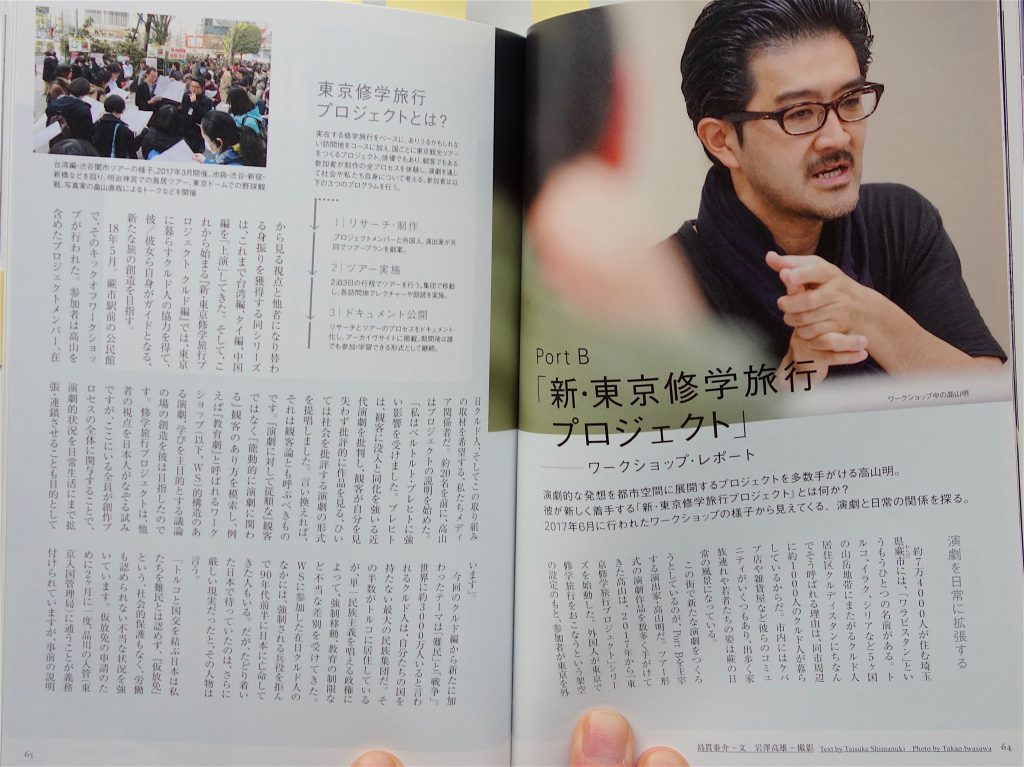
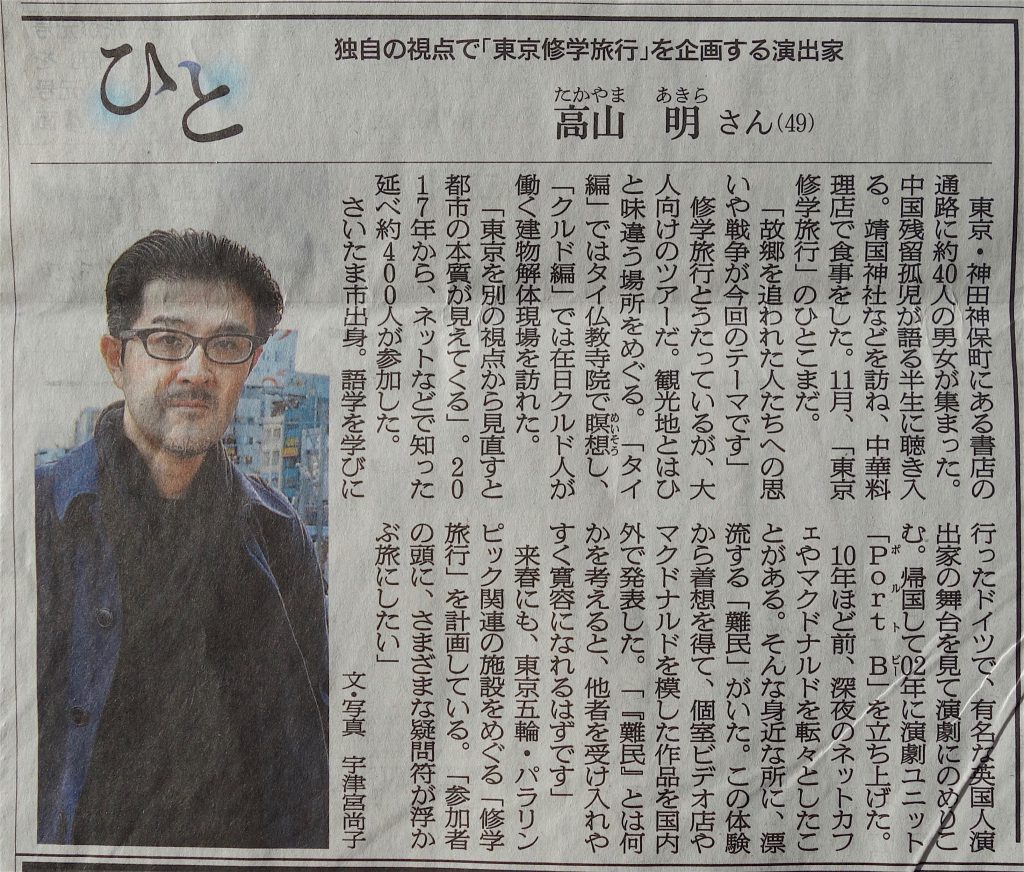
update, 2019/2/2:
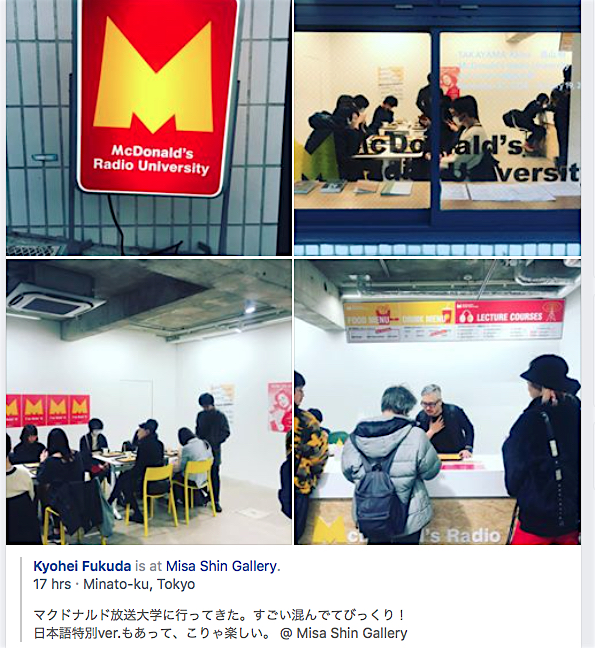
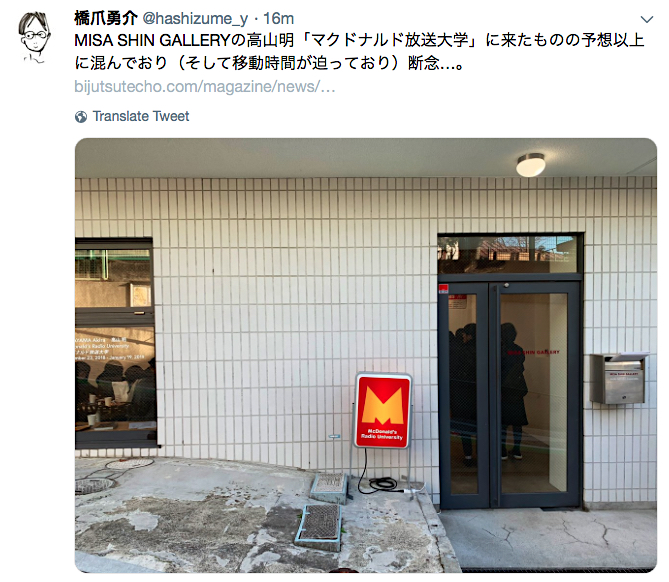
twitter 2019/2/2
